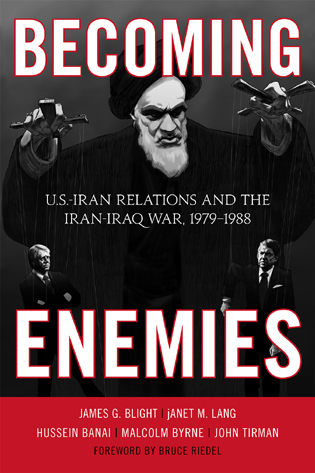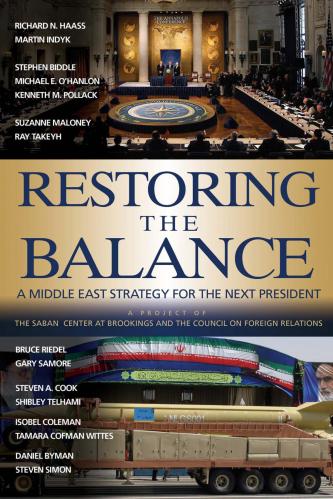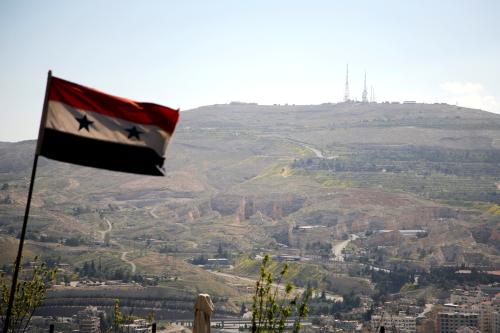A week later, the raid launched by President Trump on a Syrian air force base in response to yet another chemical weapons attack continues to resonate. Trump’s response boosted his domestic rating, introduced tension into his ambiguous relationship with Russia, has sent a signal to North Korea, and has drawn praise from Washington’s Middle Eastern allies as a sign of America’s return to a forceful, proactive posture in the Middle East.
Whether this was a solitary act or the first step in a new policy towards the Syrian crisis and more broadly in the Middle East remains to be seen. One idea the Trump administration should consider is to build a “southern Syria” option. Working with Israel and Jordan, southern Syria could become an area suitable for no-fly and safe zones, where a fresh pro-Western militia could be built.
Limited options
In fact, Washington does not have attractive options in the Syrian arena, and most of the forces and considerations that have shaped its reluctance since March 2011 are still relevant:
- the (Obama) administration’s and the public’s aversion to another major military involvement in a lengthy, expensive Middle Eastern war;
- the weakness and divisiveness of the opposition to Assad’s regime;
- the contradictory policies pursued by Washington’s allies; and
- the need to pursue two different, often contradictory aims: the destruction of ISIS and the quest for an acceptable solution to the Syrian domestic crisis.
Since the fall of 2015, Washington’s calculus has been compounded by Russia’s military intervention in the Syrian civil war. Itself a byproduct of Washington’s limited role, it has served to tilt the war’s course in the regime’s favor and has added a Russian constraint to any U.S. action.
On the assumption that the United States is still determined to avoid large-scale military involvement in Syria (boots on the ground, as the cliché goes), its options are limited. Upon Trump’s election, it was widely assumed that he would seek a grand bargain with Russia and that Syria will be an important component of such a deal. This was a dubious proposition. Moscow is deeply invested in Syria, is fully supportive of Assad, and collaborates closely with Iran in Syria. The United States has no significant assets in Syria to be used as bargaining chips, and it is difficult to envisage an American president offering Russia concessions in Eastern Europe in return for cooperation in Syria. And in any event, Russia is not alone in supporting Assad; it shares the burden with Iran, and it is doubtful that it would be willing to part ways with Iran in Syria, as it would leave Iran as a determined supporter of the Syrian president.
Assad’s next move
The net outcome of the current tension could be a Russian commitment to prevent further Syrian use of chemical weapons and a promise to implement the 2013 promise to eliminate Syria’s chemical arsenal, in return for a U.S. promise to refrain from further raids against Assad’s forces. Such an outcome would in fact be tantamount to a U.S. acceptance of the trend evident since the fall of Aleppo: a gradual reconquista by the regime, with Russian and Iranian support, of the parts of Syria held by different opposition groups.
During the last few months, Assad and his patrons proceeded slowly, keeping the violence and the number of casualties and refugees at a relatively low level. The decision to use chemical weapons was a gross miscalculation reflecting both a growing sense of confidence and a determination to occupy the area of Idlib. But if the current tension is defused and the trend is allowed to continue, the regime will eventually reestablish control over most—though not all—of Syrian territory. If this materializes, Russia and Iran (and Hezbollah) through a subordinate regime will be the victors in the Syrian civil war and Syria’s masters.
Such an outcome would affect all of Syria’s neighbors and on the balance of power in the Middle East. It would guarantee Hezbollah’s control of Lebanon, accelerate Turkey’s drift from its pro-Western orientation, sandwich Iraq between Iran and an Iranian-controlled Syria, and jeopardize Jordan’s and Israel’s national security. Israel is concerned with the prospect of Hezbollah establishing itself in the Syrian Golan, and with the repercussions of Russia’s military presence in Syria on its own freedom of action. For their part, Washington’s Sunni Arab allies would have to calculate their response to such an eventual Iranian success.
An opening?
If Washington wants to abort this scenario without committing ground forces to Syria, it should perhaps look more closely at the southern part of the country. So far, its attention and special forces have focused on the northern and eastern parts of the country, where ISIS and America’s Kurdish allies are.
But once Raqqa is occupied, it could be beneficial to think of southern Syria as an area suitable for no-fly and safe zones, where a fresh pro-Western militia could be built. The northern part of the country is full of problems: the Turkish neighbor, the Kurdish issue, and Russia’s military presence. In the south, the neighbors are Jordan and Israel. By acquiring assets in the south of the country, Washington would be able to limit—if not stop—the reconquista and to come to a future bargaining table with assets in hand.







Commentary
After the airstrike, what Washington should do next in Syria
April 17, 2017